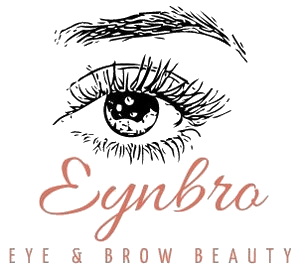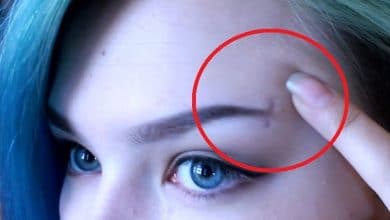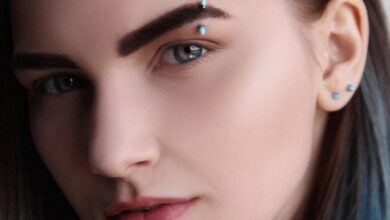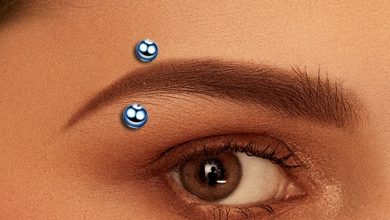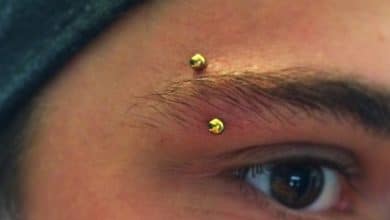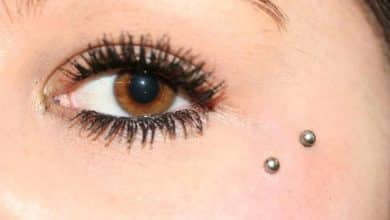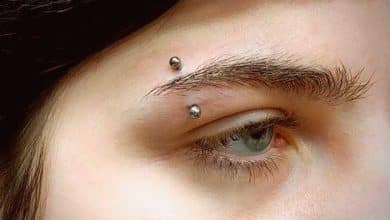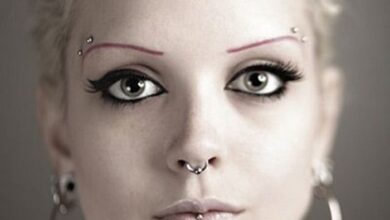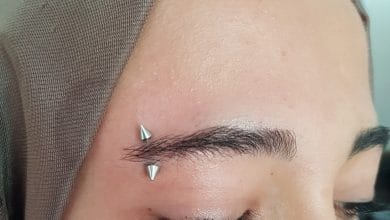Minimize Scarring: Expert Advice for Anti Eyebrow Piercing Aftercare
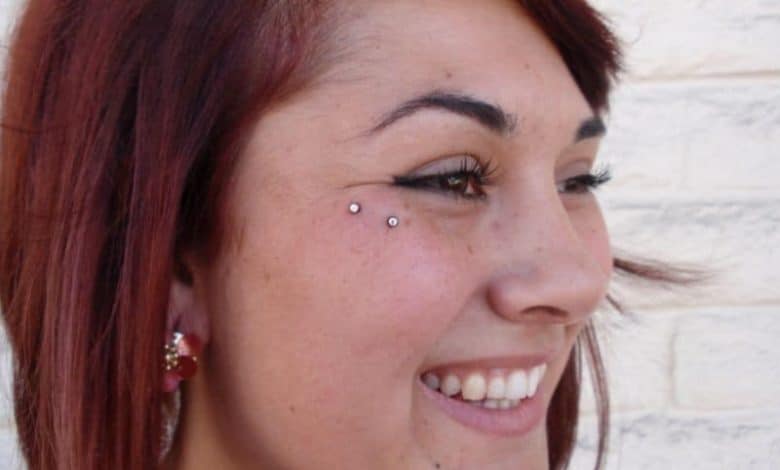
Anti eyebrow piercings have become increasingly popular in recent years, providing a unique and edgy way to express one’s personal style. However, like any piercing, proper aftercare is crucial to minimize scarring and ensure a healthy healing process. In this article, we will provide expert advice and guidelines for effective anti eyebrow piercing aftercare.
Anti Eyebrow Piercing: A Brief Overview
Anti eyebrow piercing, also known as a teardrop or upper cheek piercing, involves placing a small jewelry piece just below the eyebrow or on the upper cheekbone area. It creates a distinctive look and can be an excellent choice for those seeking an unconventional piercing option.
Importance of Aftercare
Aftercare is essential for any piercing, as it plays a significant role in preventing infection, promoting healing, and minimizing scarring. Taking proper care of your anti eyebrow piercing will not only ensure its longevity but also help maintain its aesthetic appeal.
Anti Eyebrow Piercing Aftercare Guidelines
Following these expert-recommended aftercare guidelines can greatly reduce the risk of complications and scarring:
1. Cleanse with Saline Solution
Use a sterile saline solution to cleanse your piercing twice a day. Saline helps remove debris and promotes healing. Avoid using alcohol, hydrogen peroxide, or harsh cleansers, as they can irritate the piercing and delay the healing process.
2. Avoid Touching or Rotating the Jewelry
Resist the temptation to touch, twist, or rotate the jewelry. Doing so can introduce bacteria and disrupt the healing process. Only handle the jewelry when necessary, and make sure your hands are clean before doing so.
4. Avoid Makeup and Harsh Chemicals
Refrain from applying makeup, lotions, or creams directly on or around the piercing. These products can introduce bacteria and chemicals that may interfere with the healing process. When applying makeup to other parts of your face, be mindful not to get too close to the piercing.
5. Protect from Sun Exposure and Irritants
Shield your anti eyebrow piercing from excessive sun exposure, chlorine, saltwater, and other irritants. These can cause skin irritation and delay the healing process. If you’re going swimming, consider using a waterproof adhesive bandage or a specialized piercing cover to protect the area.
6. Avoid Submerging in Water
For the first few weeks, avoid submerging your anti eyebrow piercing in bodies of water such as swimming pools, hot tubs, or natural bodies of water. These environments can introduce bacteria, increasing the risk of infection.
7. Be Mindful of Clothing and Accessories
Avoid wearing hats, headbands, or any clothing or accessories that may rub against or snag the piercing. Opt for loose-fitting clothing around the area to minimize friction and irritation.
Signs of Infection or Complications
While proper aftercare significantly reduces the risk of complications, it’s essential to be aware of potential signs of infection or other issues. Consult a professional if you experience any of the following:
- Persistent pain, redness, or swelling
- Excessive discharge of pus or blood
- Development of a fever
- Changes in the appearance or smell of the piercing
FAQ: Anti Eyebrow Piercing Aftercare
1. How long does it take for an anti eyebrow piercing to heal?
The healing time for an anti eyebrow piercing can vary from person to person, but on average, it takes around 6 to 8 weeks for the initial healing to occur. However, it’s important to note that complete healing may take several months. During this time, it’s crucial to follow proper aftercare guidelines, such as cleansing the piercing with saline solution and avoiding irritants, to promote optimal healing and minimize the risk of complications or scarring.
2. Can I change the jewelry in my anti eyebrow piercing during the healing process?
It’s generally recommended to wait until the piercing has fully healed before changing the jewelry. This is to ensure that the piercing is stable and less prone to infection or irritation. Attempting to change the jewelry too early can disrupt the healing process and increase the risk of complications. Consult with a professional piercer who can assess the healing progress and provide guidance on when it’s safe to change the jewelry.
3. Is it normal to experience redness and swelling after getting an anti eyebrow piercing?
Yes, it’s normal to experience some redness and swelling in the area immediately after getting an anti eyebrow piercing. This is the body’s natural response to the trauma caused by the piercing process. However, if the redness and swelling worsen over time or are accompanied by severe pain, excessive discharge, or other concerning symptoms, it may indicate an infection or complication. In such cases, it’s important to seek professional advice for appropriate treatment.
4. Can I go swimming with an anti eyebrow piercing?
It’s generally recommended to avoid swimming in bodies of water, such as pools, hot tubs, or natural bodies of water, during the initial healing period of an anti eyebrow piercing. These environments can introduce bacteria and increase the risk of infection. If you must go swimming, consider using a waterproof adhesive bandage or a specialized piercing cover to protect the piercing and minimize the contact with water. However, it’s crucial to consult with a professional piercer to determine the best course of action based on your specific healing progress.
5. How can I prevent scarring around my anti eyebrow piercing?
To minimize the risk of scarring, proper aftercare is essential. Cleanse the piercing with saline solution, avoid touching or rotating the jewelry, and protect the area from irritants. It’s also important to follow the recommended healing time before changing the jewelry or engaging in activities that may put stress on the piercing. If scarring does occur, consult with a dermatologist who can provide further guidance and suggest appropriate scar management techniques.
6. What should I do if my anti eyebrow piercing gets infected?
If you suspect that your anti eyebrow piercing is infected, it’s important to seek professional advice as soon as possible. Avoid removing the jewelry, as this can lead to the formation of an abscess. Your piercer or a healthcare provider can assess the infection and may recommend a course of action, such as oral antibiotics or a topical treatment. It’s crucial to follow their instructions carefully and maintain good hygiene to promote healing and prevent further complications.
7. Can I apply makeup on and around my anti eyebrow piercing?
It’s generally recommended to avoid applying makeup directly on or around the anti eyebrow piercing during the initial healing period. Makeup products can introduce bacteria and chemicals that may irritate the piercing and delay the healing process. However, you can still apply makeup to other parts of your face, taking care not to get too close to the piercing. Once the piercing has fully healed, you can resume applying makeup as usual, being mindful of the jewelry and ensuring proper hygiene.
8. Is it normal to experience crust or discharge around the anti eyebrow piercing?
Yes, it is normal to experience some crust or discharge around the anti eyebrow piercing during the healing process. This is a natural part of the body’s healing response. The discharge may appear as a yellowish or clear fluid and can sometimes harden into crust around the jewelry. It is important not to pick or forcefully remove the crust, as this can disrupt the healing process and increase the risk of infection. Instead, gently clean the area with a saline solution to soften the crust and allow it to naturally come off.
9. Can I use sea salt soak for my anti eyebrow piercing?
While sea salt soaks were commonly recommended in the past, the use of sterile saline solution is now preferred for anti eyebrow piercing aftercare. Sterile saline solution is formulated to mimic the body’s natural fluids and provides an optimal environment for healing. It is readily available in most drugstores and can be used to cleanse the piercing twice a day. Sea salt soaks, on the other hand, can be inconsistent in terms of the salt-to-water ratio and may not provide the same level of sterility as a commercial saline solution.
10. What should I do if my anti eyebrow piercing migrates or rejects?
In some cases, an anti eyebrow piercing may migrate or reject, which means the body is pushing out the jewelry. This can occur due to various factors, including improper placement, poor aftercare, or individual anatomy. If you notice signs of migration or rejection, such as the jewelry moving away from its original position or the skin becoming thinner around the piercing, it is crucial to seek professional advice. Your piercer can assess the situation and determine the best course of action, which may involve removing the jewelry to prevent further complications.
Conclusion
By following these expert guidelines for anti eyebrow piercing aftercare, you can promote proper healing, minimize scarring, and enjoy your stylish anti eyebrow piercing for years to come. Remember, everyone’s healing process is different, so it’s essential to listen to your body and give your piercing the care and attention it needs.
For more information on anti eyebrow piercing aftercare and tips from professionals, consider visiting reputable piercing studios or consulting with a dermatologist. They can provide personalized advice based on your specific needs and ensure a smooth healing journey.
